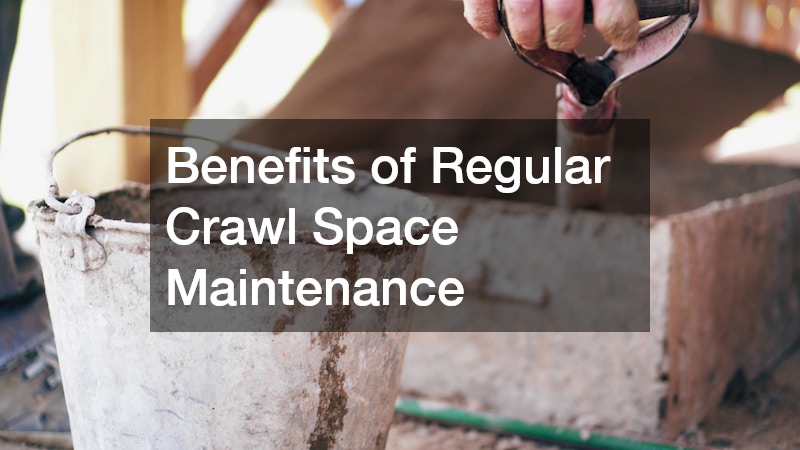Gain insights into the quintessential tips for repairing and maintaining your crawl space to ensure the longevity and stability of your home’s foundation. Explore common issues, preventative measures, and expert advice to keep your home safe and structurally sound. A well-maintained crawl space is not just crucial for the structural health of your home but also for the wellbeing of its inhabitants.
Understanding the Role of Crawl Spaces
Crawl spaces serve as a buffer between your home and the damp ground, helping to prevent moisture from entering the living areas. They provide easy access to important systems like plumbing, electrical, and HVAC installations, making maintenance and repairs more manageable.
Without well-maintained crawl spaces, homes could face significant structural challenges that could lead to costlier repairs down the road.
Given their pivotal role, keeping crawl spaces in optimal condition is essential for ensuring your home’s foundational integrity. The unique geography of crawl spaces also contributes to thermal breathing within the home, affecting air circulation which is vital for both energy efficiency and indoor air quality. Unfortunately, crawl spaces can often become overlooked in home maintenance plans, leading to problems that could have been easily prevented with regular checks and upkeep.
Common Problems Associated with Crawl Spaces
One of the most frequent issues in crawl spaces is the accumulation of moisture, which might lead to mold and mildew growth that negatively impacts indoor air quality. Damp conditions can also create a favorable environment for insects and rodents, leading to potential infestations that require extensive and costly removal. As water seeps into the crawl space, it could cause wooden elements like beams and joists to rot, compromising the home’s structural integrity.
Poorly maintained crawl spaces often signal warning signs through musty odors and higher humidity levels in living areas, causing significant discomfort. Moisture intrusion in crawl spaces can also diminish the thermal efficiency of insulation, sometimes resulting in higher energy bills due to increased heating and cooling demands. Heavy rains and floods can exacerbate these problems, especially if the drainage system is insufficient or compromised.
Benefits of Regular Crawl Space Maintenance
Undertaking regular maintenance tasks within the crawl space brings considerable advantages, including enhanced indoor air quality by reducing allergens and toxins. Homeowners who prioritize their crawl space conditions often reap energy efficiency benefits, seeing lower utility bills thanks to improved insulation and climate control. Additionally, regular upkeep helps maintain the resale value of a home, attracting potential buyers who are increasingly keen on properties with sound infrastructure.
Regular inspection and debris clearance prevent expensive repairs and extend the lifespan of your home, as minor issues can be addressed before they escalate. Users might ensure a moisture-free environment through yearly check-ups, giving the structural areas much-needed durability support. Developing a maintenance plan that includes checking ventilation options or plumbing adjustments is key to keeping crawl space complications from hindering property peace.
Assessing Crawl Space Condition
Before initiating repairs, it’s crucial to first assess the crawl space to understand the extent and nature of existing damage. Signs of damage often include foul odors, water stains, or visible mold growth on wood and insulation material. It’s essential to understand the source of the problem, which could be due to poor drainage, plumbing leaks, or ineffective vapor barriers.
Conducting a thorough inspection allows you to prioritize repairs and understand what can be dealt with on your own or with professional assistance. During the inspection, pay attention to moisture levels and check for any visible cracks in the foundation as these can be indicators of serious underlying issues. If the damage is extensive, creating a plan with clearly defined steps can help address the problem systematically and effectively.
DIY Tips for Minor Repairs
For minor crawl space repairs, such as sealing small cracks or fixing leaks, there are several DIY approaches that homeowners can attempt. For cracks, use an appropriate sealant to prevent water seepage and further damage – ensuring you follow the product instructions for best results. If there are minor leaks, especially around plumbing or ventilation pipes, flexible caulk or waterproof tape can prove to be effective temporary solutions.
Beyond sealing and taping, consider enhancing insulation by adding or adjusting foam board or fiberglass batt insulation, which can improve comfort levels within your home. Keep an eye out for loose or disconnected ducts and reconnect them to prevent energy loss and inefficiency. Investing in a dehumidifier can be a practical addition to manage humidity levels, avoiding mold-friendly conditions.
Regular Inspection and Maintenance
Routine inspections and maintenance schedules are essential to prolong the life of your home’s foundation, catching small issues before they become significant problems. Regular checks enable the identification of water infiltration sources, insect threats, or insulation anomalies that compromise the crawl space’s stability. Annual evaluations can be incorporated into wider home check-ups, ensuring a comprehensive assessment of every crucial component in your home.
By understanding the significance of crawl space repair and adopting effective preventive and corrective measures, homeowners can safeguard their property’s foundation. Regular maintenance not only addresses current issues but also prevents future problems, ensuring the safety and health of your home for years to come. Committing to nurturing the areas beneath your home’s floors leads to lasting comfort in the spaces above, fulfilling the ultimate goal of residential harmony.


